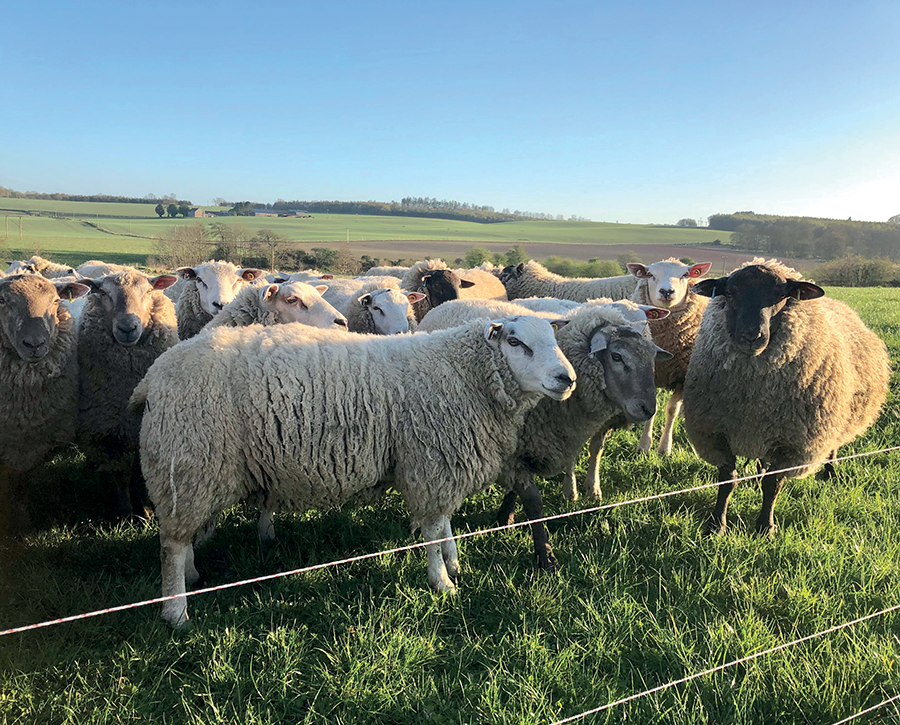Regular testing key to managing worms on Perthshire farm
20th January 2024
A quarantine dose for all incoming sheep, regular faecal egg count (FEC) testing and monitoring animal growth weights and the weather, are key to managing worms for Perthshire sheep farmer and agricultural consultant, Emily Grant.

Mrs Grant runs a farm consultancy business alongside contract growing ram lambs for a breeding company on the 30ha Perthshire farm she runs with her husband, Malcolm. Approximately 170 ram lambs arrive late October/early November at roughly 5–6-months-old, and they’re ready for sale at the end of July/beginning of August.
All incoming ram lambs are given a quarantine dose of a Group 4-AD monepantel wormer (Zolvix), before being housed for three weeks – longer than stipulated for a quarantine drench. Mrs Grant uses the time to check the quarantine treatment has been effective and allow the ram lambs to learn to eat silage.
Although they all come direct from low-risk well managed farms, she also keeps an eye out for problems like sheep scab, but it hasn’t been an issue.
After quarantine, sheep are turned out. The grazing block they go to is dependent on the weather, as she has to consider the winter risk of fluke. Mrs Grant advises making sure you don’t turn sheep out onto clean pasture after their quarantine dose, as any surviving worms from treatment need to be diluted with untreated worms from dirty pasture – this helps build up immunity in the sheep.
Worming considerations
Rearing ram lambs means she now has the same aged sheep arriving each year, and therefore has to be especially careful about the worming programme as there are no mature, immune sheep to mop up pastures. As well as administering a quarantine drench and ensuring sheep are turned out onto dirty pasture, she carries out a FEC test to confirm the quarantine wormer has worked. She continues to FEC test throughout the year, and treats accordingly.
“Weather is the main driver for worms, and I’ve really seen a difference during the last couple of summers; I had some rams that required no dose between spring and the summer sale, while in this past winter I was picking up quite high egg counts around December time.”
She recommends FEC testing regularly and especially if weather conditions, or growth rates, indicate there may be a problem with worms.
Mrs Grant tends to weigh the ram lambs once every four weeks, aiming for minimum growth rate of 100g/day over winter, and once spring grass growth starts, around 400g/day. She also operates a degree of targeted selected treatment on the farm and any rams with good growth rates that are looking well will not be dosed. This ensures some untreated worm eggs are left on pastures.
Grazing considerations
The enterprise is mainly focused on a rotational grazing system, however during hot, dry summers, set-stocking is occasionally introduced in fields with good access to shade and water to reduce stress on the rams.
“The rotational system allows me to control the grazing over the winter, and sometimes I’ll supplement the sheep with silage. My grazing shut-off is staged and once all the sales are over, I get up to eight weeks without sheep, so a good autumn gives me enough grass cover to get me mostly through the winter.
“The rotational grazing really helps me manage pasture quality and I can leave other parts in early summer for making silage.”
Herbal leys also form an important part of the grazing system; however they require careful management. The farm has two mixes – a pure Kiwi-style mix containing chicory, plantain, red and white clover; plus a mix containing the same, but with the addition of birdsfoot trefoil, alsike clover, yarrow, festulolium, timothy, and ryegrass.
“I make a decision on when to graze the herbal leys based on how well-grown they are. Normally I’d want them to be at least 15cm high with a good number of leaves – at least six – on them.”
The herbal leys provide a source of high-quality feed, which boosts nutrition, and in turn immunity and a sheep’s ability to cope with health challenges.
Long-term considerations
The driving force behind Mrs Grant’s approach to worm control is to ensure anthelmintic treatments remain effective in the long-term. “For many reasons, we need to try and reduce our reliance on wormers, but this doesn’t mean cutting them out all together,” she says.
Regular FEC testing and using wormers appropriately – including a quarantine dose and a late season break dose using a Group 4-AD monepantel wormer – will help stem the rise in resistance problems, she adds. “FEC testing has been really useful for me; by using a FECPAK testing kit I can get the results and make a decision about whether or not I need to worm relatively quickly. But if you don’t have access to this, I’d strongly recommend accessing testing through your vet.”
Read more livestock articles here


